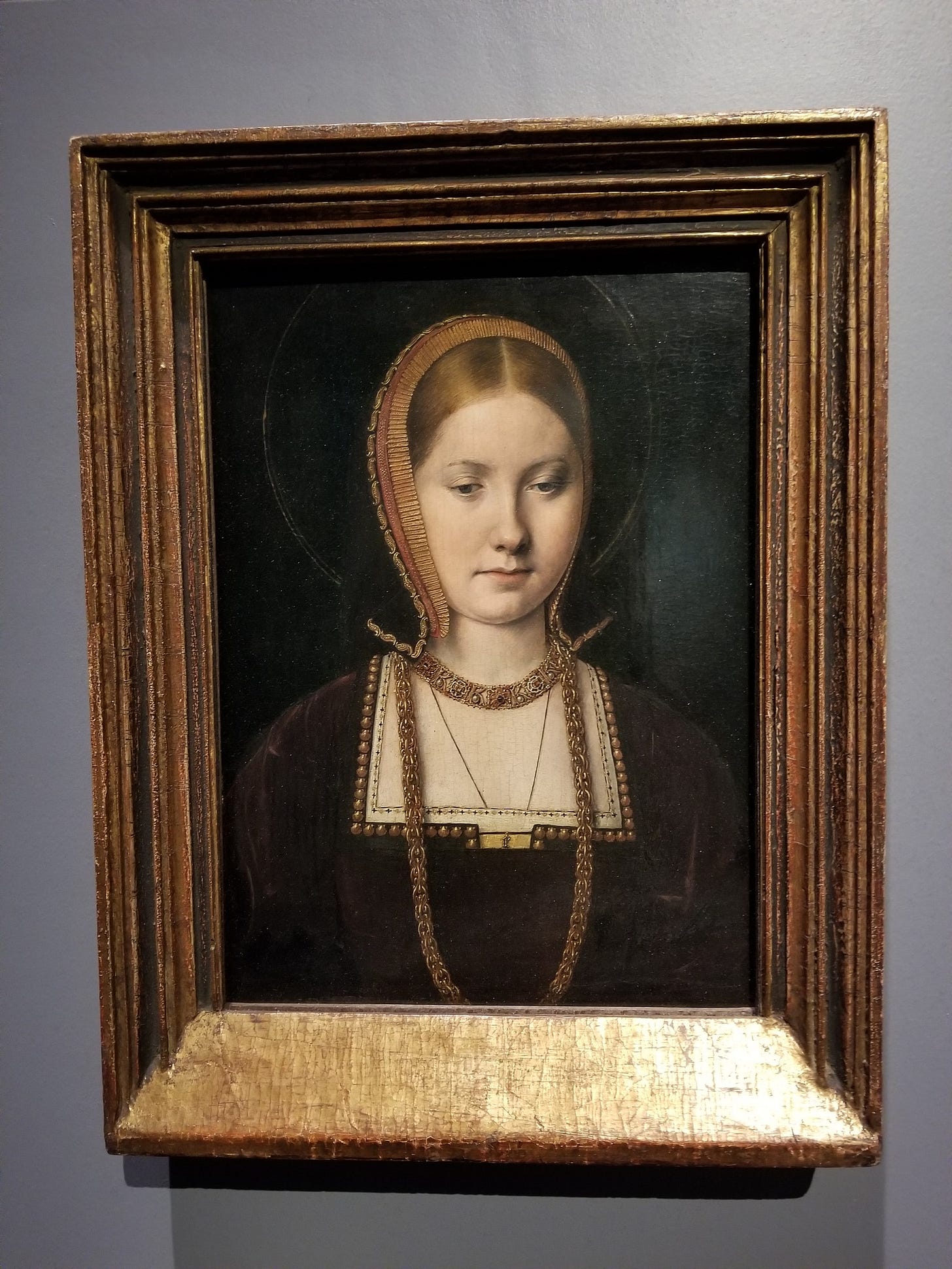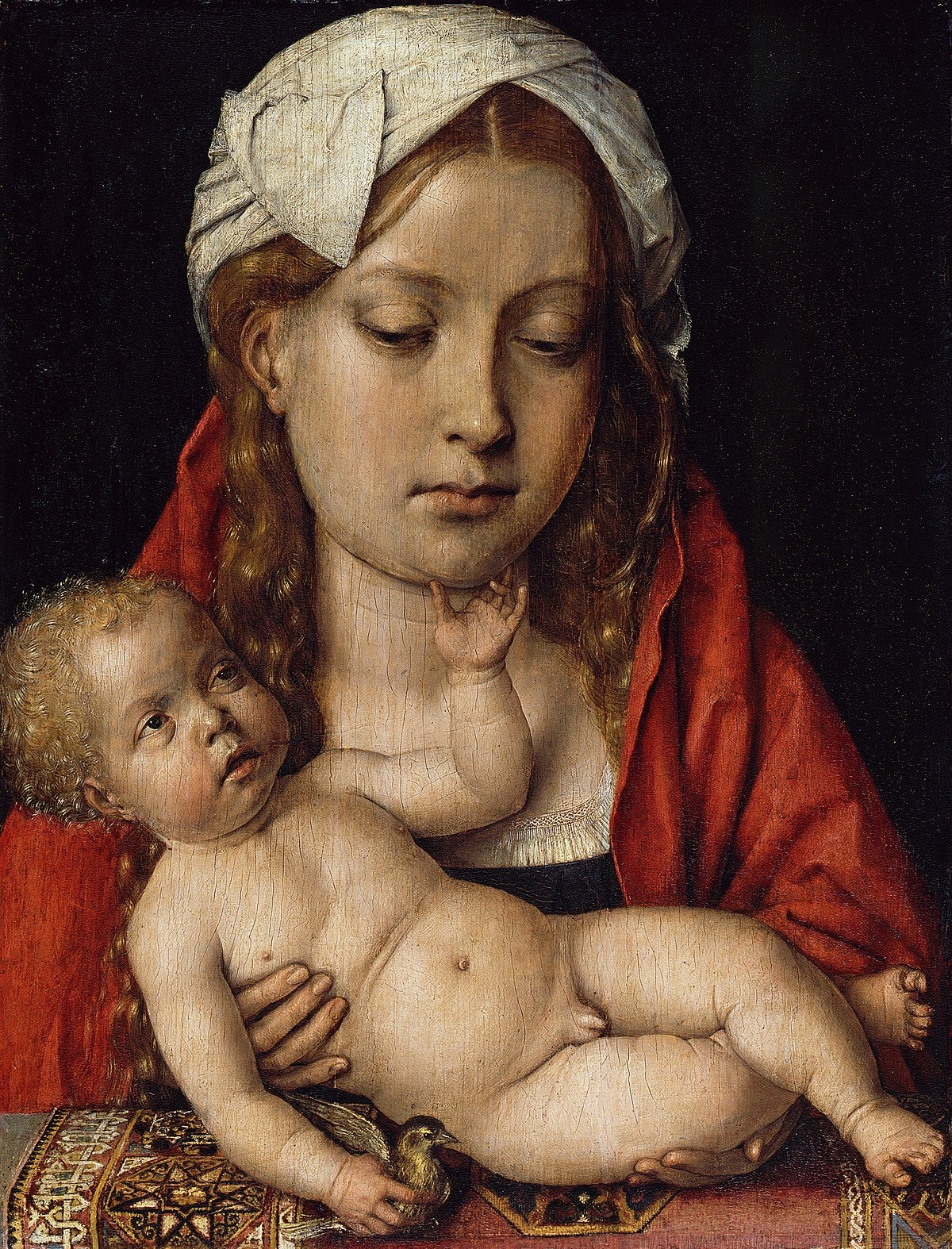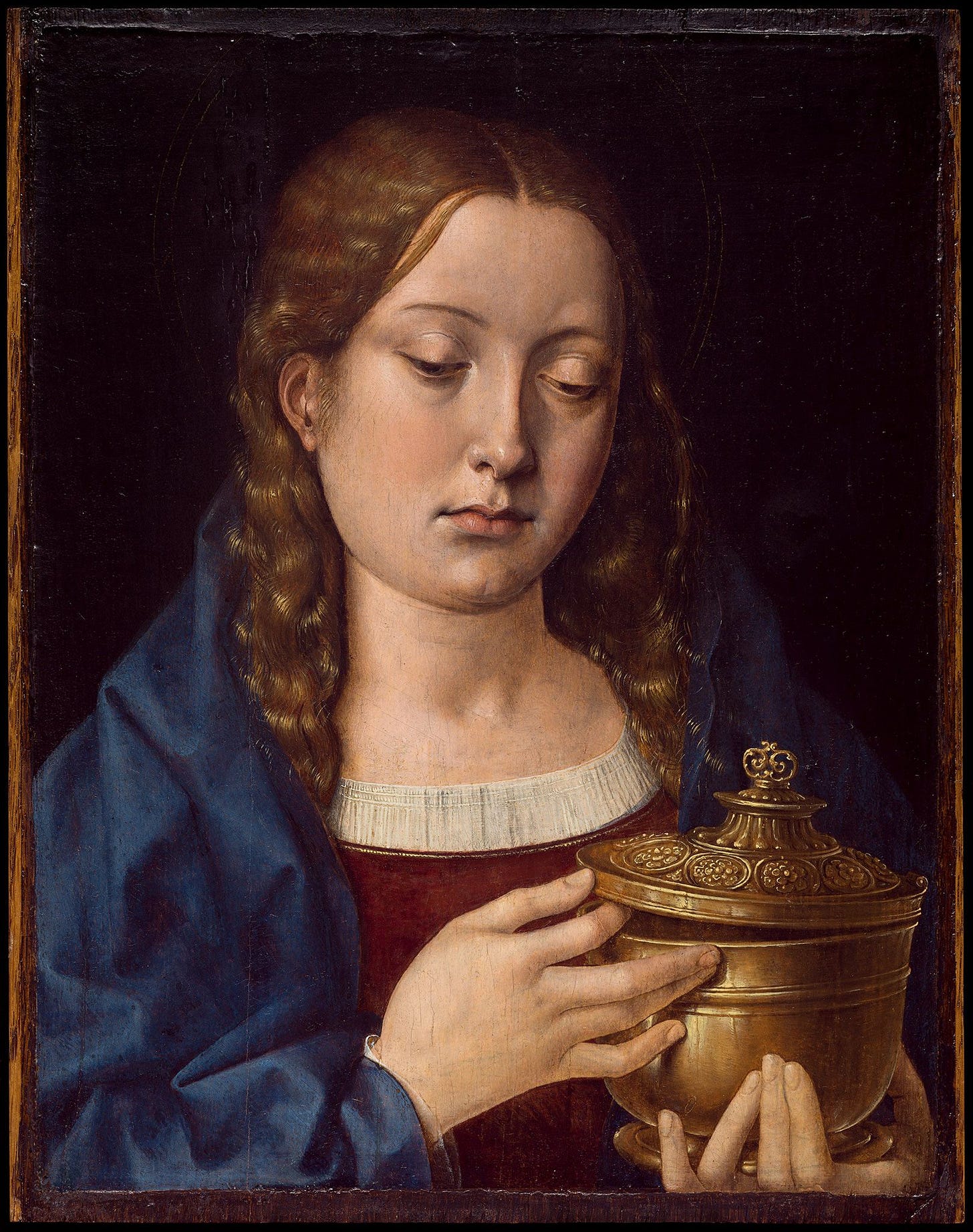Among its many treasures, the iconic Kunsthistorisches Museum in Vienna houses Portrait of a Lady by sixteenth-century Estonian painter Michel Sittow. The sitter’s identity has long been established as that of Katharine of Aragon, daughter of Isabella of Castile and Ferdinand of Aragon, first wife of Henry VIII and mother of Mary I. The identification was first proposed by Max J. Friedländer in 1915, but more recently Paul G. Matthews suggested the sitter is Henry VIII’s younger sister Mary Tudor.

Sittow’s sitter was first identified as Katharine of Aragon by art historian Max J. Friedländer in 1915 when he noticed a striking resemblance between Madonna and Child and the Vienna sitter. The identification of Sittow’s model as Katherine of Aragon was made on the basis of the intricate collar necklace consisting of a series of letters K, depicted in a pattern, interspersed with roses resembling the roses routinely used by Tudor monarchs as their dynasty’s symbol. Friedländer suggested the K’s stand for the first letter of Katharine’s name and that the letter C pinned to the Vienna sitter’s bodice could well be interpreted as the first letter of Katharine’s name, depending on how one spells it. The scallop shells lining the Vienna sitter’s neckline were interpreted as the emblem of St James, patron of Santiago de Campostela in Spain. Friedländer concluded that the painting was painted no later than 1515 and was to be sent to England to be presented to Arthur Tudor, Prince of Wales, whom Katharine would marry in November 1501.
In his 2003 thesis and then again in a 2008 article for the Kunsthistorisches Museum yearbook, Paul G. Matthews proposed that the sitter is not Katharine of Aragon but Mary Tudor, Henry VIII’s younger sister. Matthews’s identification of Sittow’s model as Mary Tudor hinges on the following points:
Mary was betrothed to Charles V from 1507 to 1514 and was referred to as the Princess of Castile at the English court. The letter K so prominently displayed in the necklace stands for “Karolus”, the Latin version of Charles V’s name.
The sitter wears Burgundian dress closely resembling the fashions worn by Charles V’s sisters in their childhood portraits. Margaret of Austria had indeed sent Mary Burgundian clothes and fashion patterns because it was a custom for brides to adopt the fashions of their husbands’ courts.
Margaret of Austria’s envoy Gerard de Plaine wrote on 30 June 1514 that a painter whose name was not recorded sent from Margaret’s court painted a “good likeness” of Mary for Charles.
As has frequently been noted by scholars, there is a marked similarity between the face of the Vienna sitter and that of St Mary Magdalene in Sittow’s painting in Detroit and of the Virgin Mary in his Madonna and Child in Berlin, both paintings dating to c. 1515.

Sittow also used the same sitter’s face for his painting entitled The Assumption of the Virgin, currently preserved in Washington DC.

The Assumption dates to c. 1500. Mary Tudor’s birth can be firmly dated to 1496 thanks to Margaret Beaufort’s entries in a personal prayer book where she recorded the births of all of her grandchildren. Mary would thus have been a child of four in 1500 when Sittow’s Assumption of the Virgin is believed to have been painted. Also, the Assumption, which predates St Mary Magdalene in Detroit and Madonna and Child in Berlin, was the first painting where Sittow used that particular facial pattern.
Stephan Kemperdick, who disagrees with Matthews’s identification of the Vienna sitter as Mary Tudor, notes that the roses are not Tudor roses but ornamental floral decorations typical for the period. He also questions why an English princess would have exactly the same facial features as the Madonnas and Magdalenes painted for Spanish clients and concludes that Mary Tudor is “the most unlikely candidate for a Vienna portrait.” I agree; I believe the portrait in the Kunsthistorisches Museum in Vienna depicts Katharine of Aragon, not Mary Tudor.
Sources:
Elizabeth Cleland, Adam Eaker, Marjorie E. Wieseman, Sarah Bochicchio, The Tudors: Art and Majesty in Renaissance England (Metropolitan Museum of Art, 2022).
John Oliver Hand, Greta Koppel, Till Borchert, Anu Mänd, Matthias Weniger, Michel Sittow: Estonian Painter at the Courts of Renaissance Europe (National Gallery of Art, 2017).
Max J. Friedländer, “Gemäldegalerie. Ein neu erworbenes Madonnenbild im Kaiser-Friedrich-Museum”, Amtliche Berichte aus den Königlichen Kunstammlungen, 36, 9 (1915), pp. 1-4.
Paul G. Matthews, “Henry VIII’s Favourite Sister? Michel Sittow’s Portrait of a Lady in Vienna”, Jahrbuch der Kunsthistorischen Museums Wien 10 (2008), pp. 140-149.
Giles Tremlett, Catherine of Aragon: Henry's Spanish Queen (Faber & Faber, 2010), p. 123.
Stephan Kemperdick: [Review of:] Michel Sittow: Estonian Painter at the Courts of Renaissance Europe (National Gallery of Art, Washington, Jan 28–May 13, 2018). In: ArtHist.net, Jul 8, 2018 <https://arthist.net/reviews/18593>.






😻🏵️It's Katherine of Aragon,her necklace,shows,not just Tudor Roses,but pomegranate flowers as well.The pomegranate fruit being Katherines personal emblem.